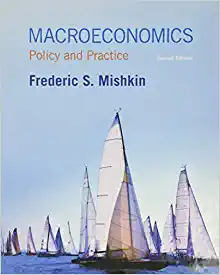Question
A risk averse individual faces uncertainty with two outcomes: good, bad. The individual has income $560 under good and $350 under bad outcome. The probability
A risk averse individual faces uncertainty with two outcomes: good, bad. The
individual has income $560 under good and $350 under bad outcome. The probability of good
outcome is 4/7 (so the probability of bad outcome is 1 4/7 = 3/7). The individual can buy any
non-negative x units of insurance. Every unit of insurance has price $p and it pays $1 in the event
of bad outcome. In this insurance market, the unit price of insurance is known to be p = 1/2.
(a) Determine if the insurance market is competitive or not.
(b) Suppose the individual buys x units of insurance. Determine the individual's net
income under good income, net income under bad income and the average net income. Draw
these three in a diagram as functions of x.
(c) For the individual: (i) compare full insurance with over insurance and (ii) compare
full insurance with partial insurance. Then determine best choice of insurance for the individual.
(d) Consider the same problem, but suppose the individual is risk neutral instead of
risk averse. Determine best choice of insurance for the individual.
Step by Step Solution
There are 3 Steps involved in it
Step: 1

Get Instant Access to Expert-Tailored Solutions
See step-by-step solutions with expert insights and AI powered tools for academic success
Step: 2

Step: 3

Ace Your Homework with AI
Get the answers you need in no time with our AI-driven, step-by-step assistance
Get Started


